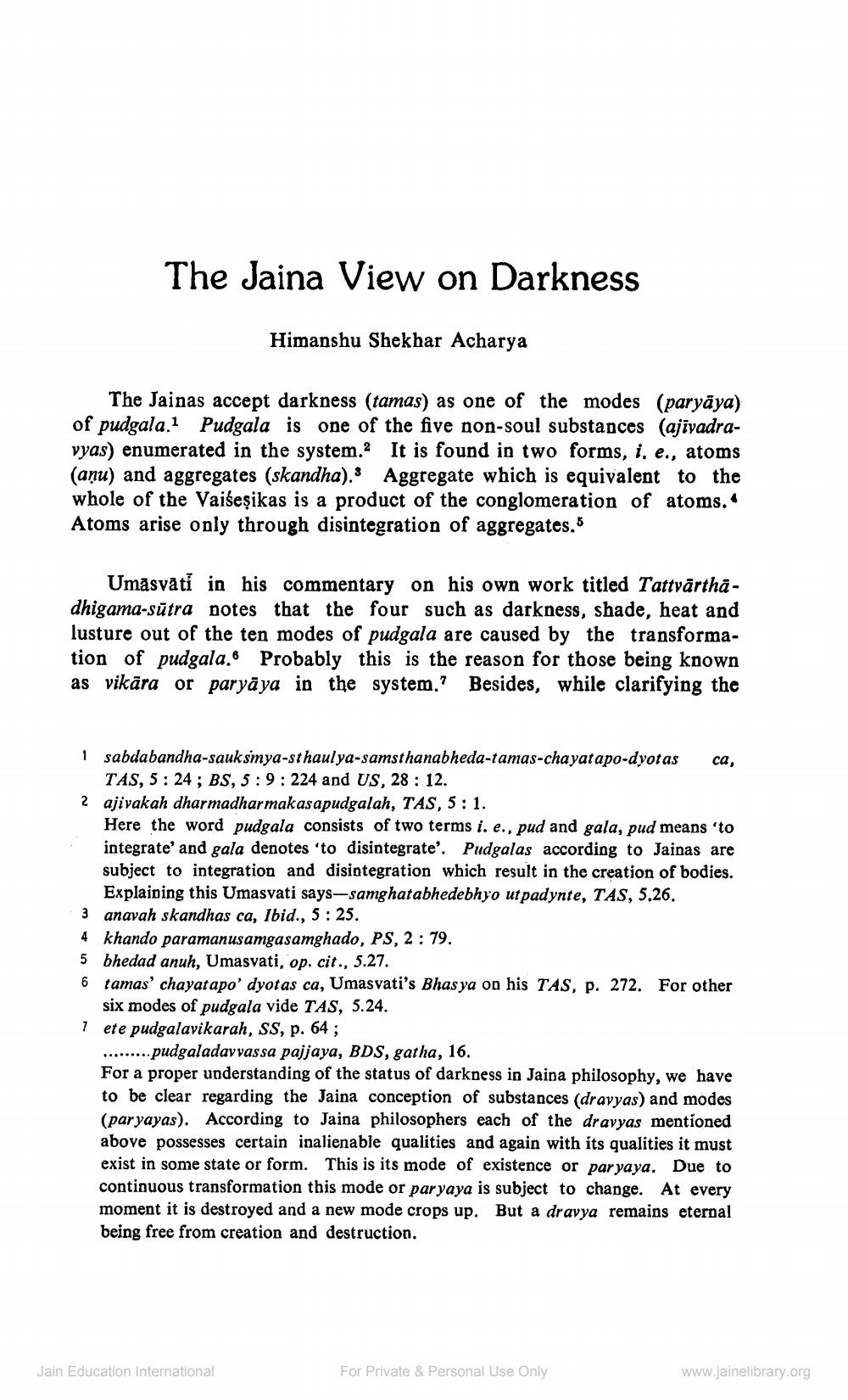________________
The Jaina View on Darkness
Himanshu Shekhar Acharya
The Jainas accept darkness (tamas) as one of the modes (paryāya) of pudgala.1 Pudgala is one of the five non-soul substances (ajīvadravyas) enumerated in the system. It is found in two forms, i, e., atoms (aņu) and aggregates (skandha). Aggregate which is equivalent to the whole of the Vaišeşikas is a product of the conglomeration of atoms. Atoms arise only through disintegration of aggregates.5
Umàsvati in his commentary on his own work titled Tattvārtha - dhigama-sūtra notes that the four such as darkness, shade, heat and lusture out of the ten modes of pudgala are caused by the transformation of pudgala. Probably this is the reason for those being known as vikāra or paryāya in the system.? Besides, while clarifying the
i sabdabandha-sauksmya-sthaulya-samsthanabheda-tamas-chayatapo-dyotas ca,
TAS, 5:24; BS, 5:9:224 and US, 28 : 12. 2 ajivakah dharmadharmakasapudgalah, TAS, 5:1.
Here the word pudgala consists of two terms i. e., pud and gala, pud means 'to integrate' and gala denotes 'to disintegrate'. Pudgalas according to Jainas are subject to integration and disintegration which result in the creation of bodies.
Explaining this Umasvati says--samghatabhedebhyo ut padynte, TAS, 5.26. 3 anavah skandhas ca, Ibid., 5:25. 4 khando paramanusamgasamghado, PS, 2:79. 5 bhedad anuh, Umasvati, op. cit., 5.27. 6 tamas' chayatapo' dyotas ca, Umasvati's Bhasya on his TAS, p. 272. For other
six modes of pudgala vide TAS, 5.24. 1 ete pudgalavikarah, SS, p. 64;
.........pudgaladavvassa pajjaya, BDS, gatha, 16. For a proper understanding of the status of darkness in Jaipa philosophy, we have to be clear regarding the Jaina conception of substances (dravyas) and modes (paryayas). According to Jaina philosophers each of the dravyas mentioned above possesses certain inalienable qualities and again with its qualities it must exist in some state or form. This is its mode of existence or paryaya. Due to continuous transformation this mode or paryaya is subject to change. At every moment it is destroyed and a new mode crops up. But a dravya remains eternal being free from creation and destruction.
Jain Education International
For Private & Personal Use Only
www.jainelibrary.org




